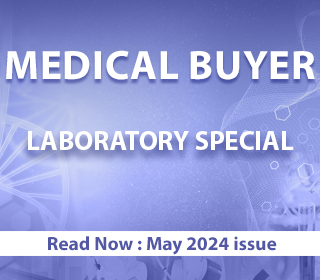Buyers Speak
Patient-monitoring equipment – Technology trends

The concept of patient care begins with data collection and assessment of patient’s current status. Analysis of this data is then used for decision making about both therapeutic goals and diagnostic means. This data needs to be continuously monitored. Originally, a monitor was a person who admonished others but now the monitor is a thing, which gives warning about parameters it is recording and analyzing. The aim of patient monitoring is to do continuous surveillance, so to detect early or dangerous deterioration, with reliability and accuracy, and to give an appropriate warning or alarm.
The Internet of Things (IoT) spans two important areas – the development of smart, connected products and devices, and the proliferation of big data.
The focus in the healthcare industry is shifting to value-based, patient-centric care and outcomes. For example, data sensors could help a healthcare provider detect potential issues in a prosthetic knee joint, helping them analyze the bilateral force distribution and pressure patterns across the lower limb. In addition to offering huge value to the patient (e.g., alerting them to the first hint of strain), the provider benefits by using 24/7 monitoring that allows for adjusting treatment, and thus avoids the additional costs of prolonged recovery or remedial treatment.
Big Data is having a huge impact on the medical field. Patient-specific data is increasingly available through a new generation of devices and applications that collect information through wearables, home monitors, and smartphones. Big Data allows medical providers and healthcare professionals to accumulate and analyze a much larger population base and assess huge volumes of new data, opening up new areas for research and treatment opportunities. Again, remote-monitoring systems can help collect this information and play a role in boosting analysis of this healthcare-related Big Data.
The role of IoT for remote monitoring and healthcare applications is increasing. IoT will eventually allow patients and providers to work together for more effective chronic-disease management, deeper engagement, and more open communication, bringing especially high-value care to the elderly, patients with chronic conditions, and those requiring constant supervision to allow patient data to be continuously monitored (e.g., glucose monitors, fetal monitors, electrocardiograms, and blood pressure monitors) and transmitted via cloud-based platforms. These devices can alert doctors and nurses of important changes in vital signs. A KLAS Research report surveying 25 healthcare organizations found 38 percent of healthcare organizations running RPM programs focused on chronic disease reported reduced admission, while 17 percent cited cost reductions.
The next trend in remote patient monitoring (RPM) technology is miniaturization and wearables. One example is Philips Healthcare’s IntelliVue Guardian Solution. The wearable patient-monitoring system tracks patients’ vital signs. Using AI software, the system can predict health crises before they occur, giving doctors a head start in treating the patient. Wearable medical technology innovations are driving growth, allowing healthcare to reach new frontiers. Continuous temperature-monitoring devices (such as chest straps) can be used for babies and young children, postoperative patients, cancer patients, and seniors. Painless and accurate glucose monitoring, AI-based wearable technologies learn about the user, for example, smart watches that recognize and normalize sleep apnea – a dangerous health condition.
To summarize, it would be prudent to say that from a fully connected hospital environment including patient’s vital signs, laboratory parameters, imaging, and data from support systems like ventilators to paraphernalia like infusion pump, which can be seen on smart phone of a physician now, perhaps we are moving to a world where entire communities can be monitored and both the population as well as caregivers can be alerted much before than previously assumed. This humongous information of health data while can be used to reduce hospitalization rate and morbidity is also going to pose a challenge in terms of privacy issues and ethics of data sharing. Once these issues are ironed out, remote patient monitoring has the potential to change the entire paradigm of medical care delivery as it exists today.














